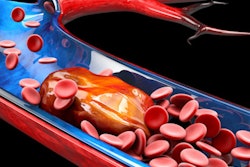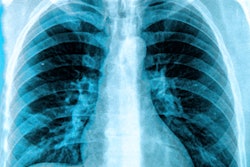
An artificial intelligence (AI) algorithm can be used to identify forgotten inferior vena cava (IVC) filters on radiography exams, according to research presented at the Society for Imaging Informatics in Medicine (SIIM) annual meeting.
Researchers from the University of California, San Francisco (UCSF) have developed a deep-learning model that provides accurate and generalizable performance in screening abdominal radiographs for the presence of IVC filters. When used clinically, the algorithm could potentially identify patients with IVC filters that are due for removal.
"Our object detection network yields highly accurate detection of IVC filters with excellent transferability to other institutions other than where it was trained," said presenter Dr. John Mongan, PhD. "The high specificity that we have seen with this model we believe will be important in keeping the false-positive rate low for our screening application."
IVC filters provide benefits in patients who have an acute risk of a pulmonary embolism, but they are designed for temporary use and removal after they're no longer needed, according to Mongan. Although complications can result if they're left in place long-term, retrieval rates for these filters tend to be fairly low, unfortunately.
"There's an opportunity to improve patient health by increasing the number of these filters that are retrieved," Mongan said.
Some follow-up programs have been able to improve retrieval rates, but these efforts are limited by the fragmented healthcare system, he said.
"And in particular, many filters are placed in the setting of trauma, where it's common for a patient to have the filter placed at a different hospital or a different healthcare system from the one where they receive their ongoing care," Mongan said.
As a result, the researchers sought to utilize AI to screen radiographs to find IVC filters and identify candidates for retrieval. They used an object detection network, a deep-learning architecture that excels at finding and classifying small parts of large images, he said. It also identifies the area of the image in which it detected the filter, making the algorithm's results easily explainable for the radiologist.
The algorithm was trained and tested on 5,225 abdominal radiographs from UCSF, including 1,580 containing an IVC filter. Of these, 70% were used for training, while 15% were utilized for validation and 15% were employed for testing. In addition, the algorithm was also tested on an external dataset of 1,424 abdominal radiographs (including 573 with an IVC filter) from the University of California, Irvine.
The model yielded high performance on both the internal and external test sets.
| AI algorithm performance for identifying IVC filters on x-ray | ||
| Internal test set | External test set | |
| Area under the curve | 0.995 | 0.993 |
| Sensitivity | 96.2% | 97.9% |
| Specificity | 98.9% | 99.6% |
The differences in the algorithm's performance on the internal and external test were not statistically significant.
After analyzing the few errors by the algorithm, the researchers observed that false-negative failures included cases where much of the filter was obscured by barium in the colon, as well as in cases where there was very low contrast between the filter and the background due to radiographic technique and body habitus. Other false-negative cases included filters that were overlaid against a busy background such as facet joints and skin staples, according to Mongan.
Meanwhile, false-positive results were attributed to cases such as a facet arthropathy that had a configuration resembling an IVC filter, Mongan said. In addition, there were some misidentifications of electrocardiogram leads and sternal wires.
In the next step of their work, the researchers plan to utilize the algorithm to screen daily radiographs and identify candidates for IVC filter retrieval, Mongan said.




















